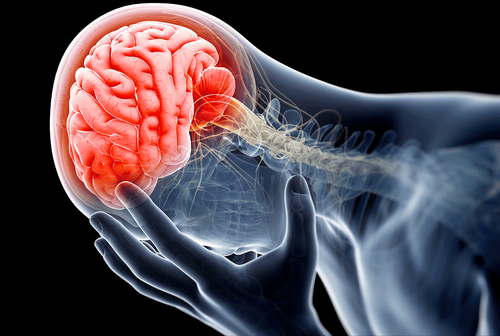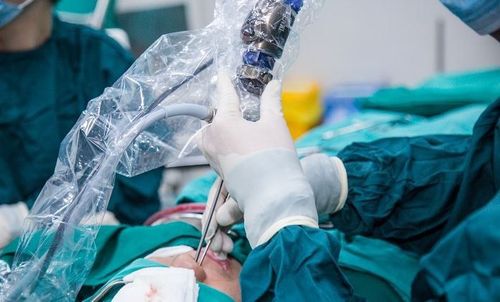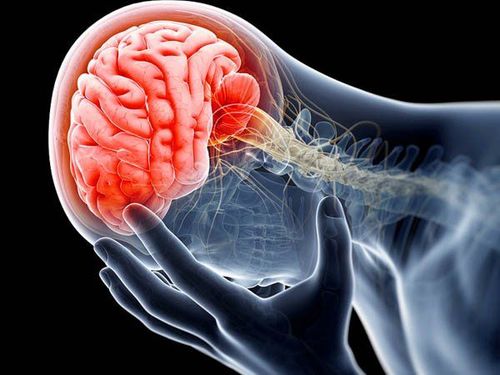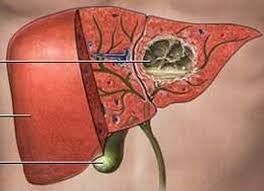This is an automatically translated article.
Skull floor fracture is one of the types of traumatic brain injury, causing bone discontinuity in the base of the skull. If not treated properly, a skull fracture can be fatal.1. What is skull floor fracture in traumatic brain injury?
Skull floor fracture is a type of primary injury, which occurs when the craniofacial cracks in the skull extend to the base of the skull. Most cases of craniofacial fractures are in the midbrain region, involving the stony bones and cranial nerves such as the III, IV, V, VI, VII, and VIII. . Occasionally, cerebrospinal fluid or blood will also drain into the outer ear.
When the fracture of the skull floor occurs in the anterior floor, the phenomenon of brain pooling around the eye socket will occur and along with the expression of cerebrospinal fluid or blood will flow out through the nasal passage, and at the same time cause damage to the cord. Cranial nerves number I and II.
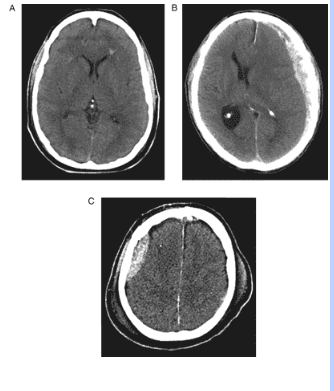
Vỡ sàn sọ đa phần xảy ra do chấn thương sọ não
2. Dangerous complications from skull floor fracture
2.1 Epidural hematoma
This is the most common complication of skull fracture, especially in young people, rarely in the elderly because the meninges at this age have adhered to the skull.
Causes of an epidural hematoma are bleeding from the cancellous layer of bone, lesions in the meningeal vessels, especially in the middle meningeal artery, and lacerations of the venous sinuses.
When having an epidural hematoma, the patient may experience some typical signs such as:
Disturbance of consciousness. Dilated pupils on the side of the hematoma. There are focal neurological signs. Paralysis of the opposite half of the body.
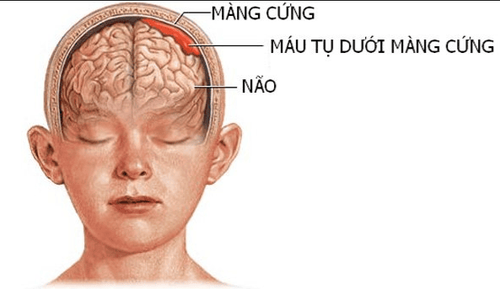
Máu tụ ngoài màng cứng là biến chứng thường gặp nhất của vỡ sàn sọ
2.2. Brain damage
The most common injury is a concussion on the base of the skull or areas that are in high contact with the skull bones such as the frontal lobes, the temporal lobes...
The clinical manifestations of brain contusion may vary depending on the location. location, nature and extent of the injury. In it, the patient may:
Be agitated, struggle violently. Comatose. There may be paralysis and speech disorders.

Tổn thương não gây hôn mê ở người bệnh
2.3. Injury to cranial nerves
I: affects the sense of smell, leading to some manifestations such as loss of sensation or decreased sense of smell (usually only on one side). In the long term, the patient will be in a state of poor alertness, nosebleeds... Second nerve: usually occurs when the patient has anterior skull fracture, leading to the rupture of the optic canal and causing compression. pressure on the second nerve. The clinical manifestations are usually visual impairment, pupil dilation, loss of response to light, etc. III and VI nerves: caused by fracture of the sphenoid cleft with symptoms such as ptosis, pupil dilation, ophthalmoplegia, and loss of accommodation. VII nerve: due to bone fracture, causing hearing loss or even complete deafness. Nerve VIII: also due to bone fracture mainly, can cause peripheral facial paralysis.
2.4. Blood vessel damage
Injury to the external carotid artery Due to the fracture of the small round foramen, it often causes continuous bleeding and hematoma formation in the temporal fossa. This area of hematoma progresses very rapidly, causing signs related to impaired consciousness. In particular, complications can cause death very quickly.
Injury to the internal carotid artery Usually occurs because the dura in this segment of the artery is torn, causing massive bleeding and leading to hemispheric ischemia. The patient will quickly go into a coma and even die.
Injury to the carotid artery in the cavernous sinus The patient will feel continuous tinnitus and protrusion of one eye. In particular, the veins in the eyes will be congested and a continuous murmur will be heard.
Injury to the vertebral artery The most obvious consequence of this complication is the leakage of cerebrospinal fluid and flowing through the nose, throat, ear canal... causing meningitis.

Tổn thương động mạch đốt sống gây ra viêm màng não
3. Instructions for treatment – first aid for trauma to the skull floor
First aid
Patient needs to lie down, head horizontal or 30 degrees higher than the body, avoid bending the neck. Quickly insert an intravenous line for fluids and antibiotics. Clear the patient's airway. Use certain anti-cerebral edema and anti-coagulation drugs when necessary. Insert a urinary catheter to monitor the patient's urine output. Specific treatment
For cases of nasal bleeding and damage to cranial nerves I and II, urgent surgical management is required, eg external carotid artery ligation ( 1 or both sides).
In case of leakage of cerebrospinal fluid into the nasal passage or outside the ear, urgent surgery is required to fill the fistula on the floor of the skull, limiting the risk of death of the patient due to meningitis.
Some other types of nerve damage:
Nerve I: surgery is not recommended because it will have little treatment effect, medical treatment is recommended. Nerve VII: treat with anti-edema drugs if there is edema, late paralysis... For patients with early paralysis from the beginning, doctors need surgery to connect nerves by microsurgery. Injury to blood vessels: surgical intervention is possible. Overall, a skull fracture is a serious injury that has many health and life-threatening consequences and is potentially life-threatening. Therefore, patients need to be carefully monitored and treated early to minimize the risk of complications from skull fracture.

Bệnh viện Đa khoa Quốc tế Vinmec có đội ngũ y bác sĩ đầu ngành giúp khách hàng an tâm khám và điều trị bệnh
Vinmec International General Hospital is one of the hospitals that not only ensures professional quality with a team of leading medical doctors, modern equipment and technology, but also stands out for its examination and consultation services. comprehensive and professional medical consultation and treatment; civilized, polite, safe and sterile medical examination and treatment space.
If you have a need for consultation and examination at the Hospitals of the National Health System, please book an appointment on the website for service.
Please dial HOTLINE for more information or register for an appointment HERE. Download MyVinmec app to make appointments faster and to manage your bookings easily.




